There are about twenty species of chipmunks found in North America. Here in Maine, we have the eastern chipmunk Tamias striatus. The other species of chipmunks are smaller, belong to the genus Eutamias, and live in the West. The eastern chipmunk is a small, striped rodent, belonging to the squirrel family Sciuridae. Every spring and summer we enjoy watching these critters as they chase each other around the property, especially in the pool area. They also keep the cat quite entertained for hours as he watches out the windows. Unfortunately, because of their antics, we have also had to save a few from drowning in the pool. I usually just scoop them out with my hands. During the past five years, we have lost two chipmunks due to drowning. We have since put towels on a couple of corners of the pool in order to give them a chance to climb out to safety.
Another activity the chipmunks like to participate in is stealing bird seed from the feeders. I don’t mind if they take the extra seeds that have fallen onto the ground or even a small amount from the feeders themselves, but these little thieves take way too much. I have one chipmunk, in particular, that has become my favorite bird seed bandit. I believe it is a female, as she lets me get pretty close. We play the same game every day. How many times do I have to open the door, before the chipmunk is in the feeders again? I usually end up bringing a few of them in earlier than usual. I have to bring the feeders in at night anyway, because of the squirrels.
This year, I put a cylinder feeder out for the birds that don’t like to come close to the house and this has especially been a favorite for this chipmunk. I have watched her empty the whole feeder for about two days. I watch her run back and forth in a comical way, with her cheeks totally full of seeds. This chipmunk is very cute but very persistent. As I am writing this, I have had to get up several times already to get her off the feeders.
In this post, I would like to share some information about the eastern chipmunk and answer the questions, how much seed is this chipmunk storing for the winter and where is it taking all of it?
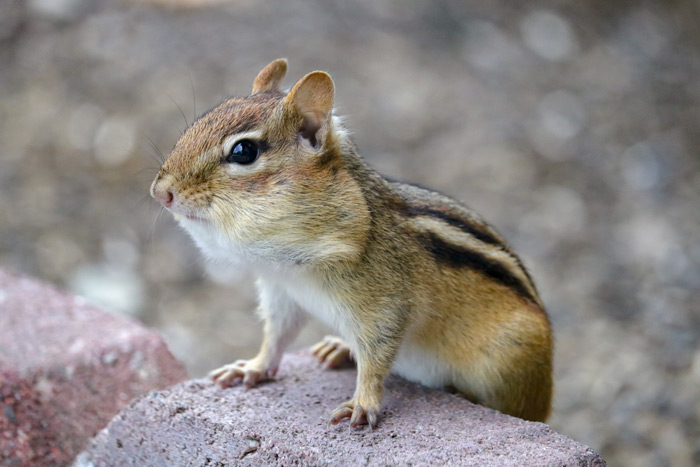
The Latin name for chipmunk means striped striatus and storer Tamias.

Eastern chipmunks are about 5 to 6 inches long and weigh 2 1/4 to 4 1/2 ounces. It has a reddish brown coat with one white stripe that runs down the center of the back in between two black stripes on each side that ends in a dark tail. The tail can be long, short, tapered, or flat. If you observe closely, you may be able to recognize and identify your frequent visitors by their tail length and shape. The fur is lighter on the underside of its body. There is also a tawny-colored stripe that runs from its whiskers to below its ears. There are four toes each on the front legs and five toes on the hind legs. It also has two fewer teeth than other chipmunk species.
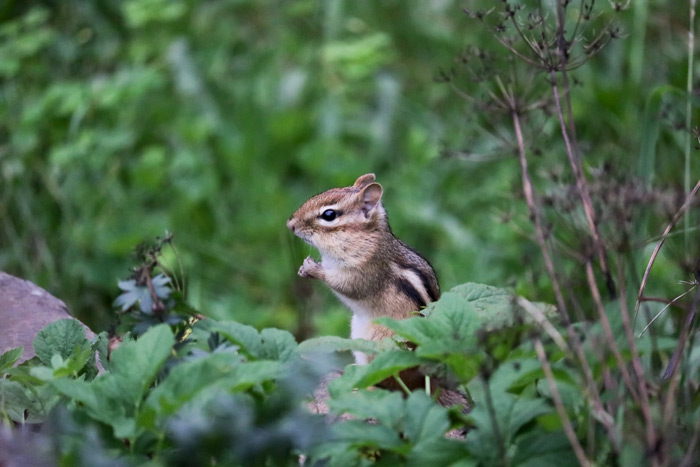
The eastern chipmunk prefers to live in open deciduous forests and at the edges of woodlands. Chipmunks can also be found in gardens, bushy areas, and in rocky areas such as walls near houses and other structures.
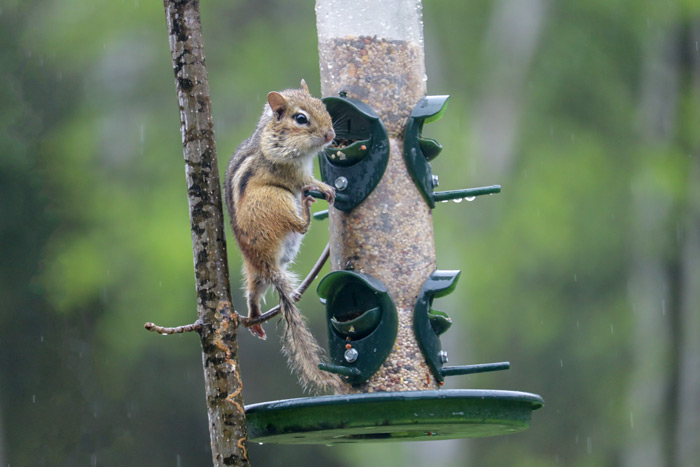
Eastern chipmunks are known for storing their food so that they will have a large supply available to consume throughout the winter. They spend a great deal of time doing so, especially in the fall. Chipmunks will store more food than they need for the year. Chipmunks can store up to 8 pounds of seed for the winter.
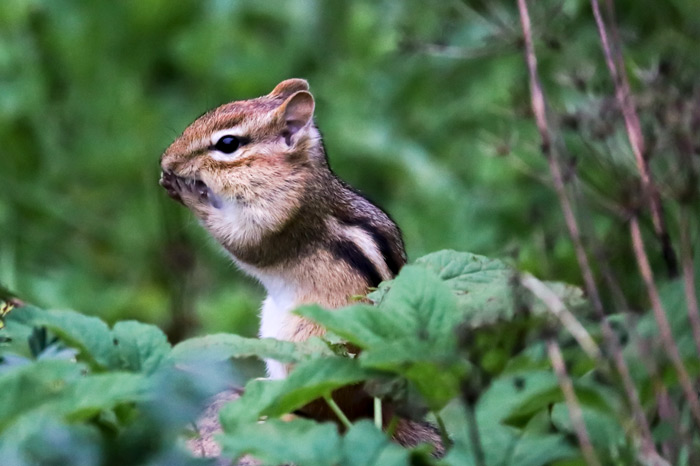
Eastern chipmunks are mainly active during the day, spending most of their day foraging. Chipmunks are omnivores and most of their diet is made up of bulbs, seeds, acorns, fruits, berries, nuts, corn, green plants, and mushrooms. It also eats insects, worms, snails, bird eggs, and small mammals like mice.
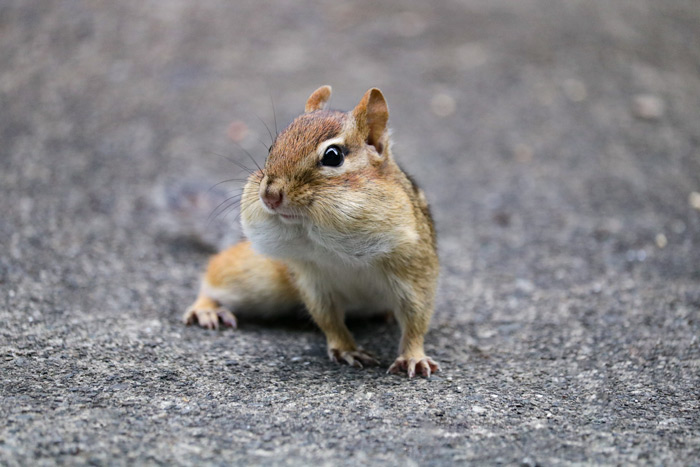
Eastern chipmunks have large cheek pouches that allow them to transport their food for storage. These pouches can reach the size of their body when they are full. They empty their pouches by squeezing their cheeks with their paws.

Eastern chipmunks are not usually seen in the winter, because they spend a few months during this time hibernating underground. They don’t sleep all the way through the winter. They will retreat to their burrows and wake every few days. They raise their body temperatures to normal and feed on their stored food.
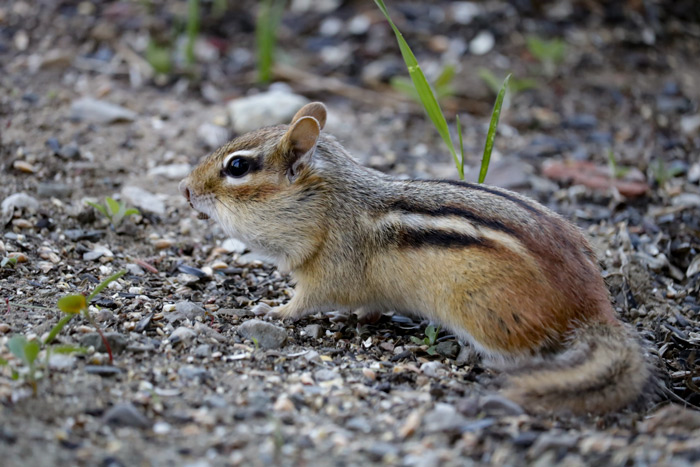
The burrow is also an important part of life for the eastern chipmunk Tamias striatus. Burrows can be as simple as a single chamber or made up of several chambers. The burrow will have a nest and this is where the chipmunk will sleep, give birth and hibernate. This area may also be where the chipmunk stores its food. Chipmunks may also dig additional storage chambers for the food they have gathered.

The eastern chipmunk lives a solitary life, except during the mating season. Chipmunks can have two breeding periods a year. The two breeding seasons are from February to April and June to July. The female is pregnant for 31 days. They will have one or two litters of three to five young called pups. At birth, the pups are hairless and blind with transparent skin. As the pups develop, they remain underground. At two weeks, they will have fine and fuzzy hair. At three weeks, they can hear and at four weeks, they can see. When they are fully weaned at about six weeks old, they will start to venture out of their burrow. At this time, the mother will keep a watchful eye on her young, and eventually, the young chipmunks will disperse to find a food source and burrow.
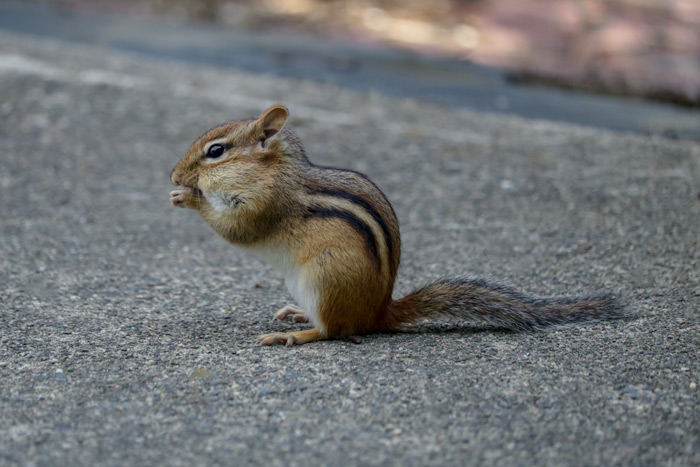
The eastern chipmunk is very vocal and can be heard chattering as they gather food. They communicate with each other with chirping sounds and this increases when they feel threatened. They have several predators such as hawks, foxes, raccoons, weasels, snakes, bobcats, lynx, and the domestic cat. Chipmunks can live three or more years in the wild and may live as long as eight years in captivity.
Here is a short video of my favorite bird seed bandit in action:
Resource used for this post:
Guide To Animal Tracking And Behavior by Donald & Lillian Stokes
Leave a Reply